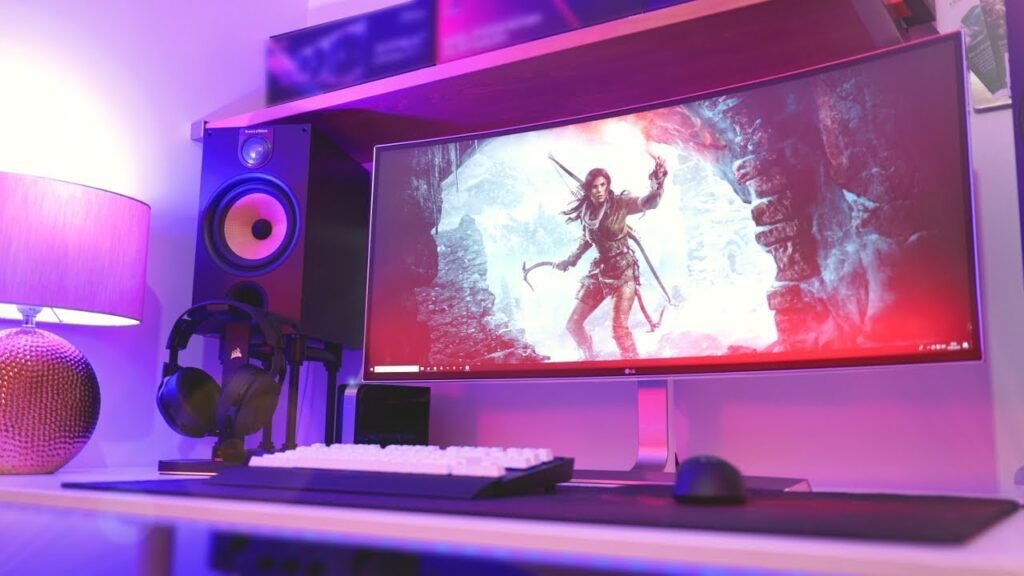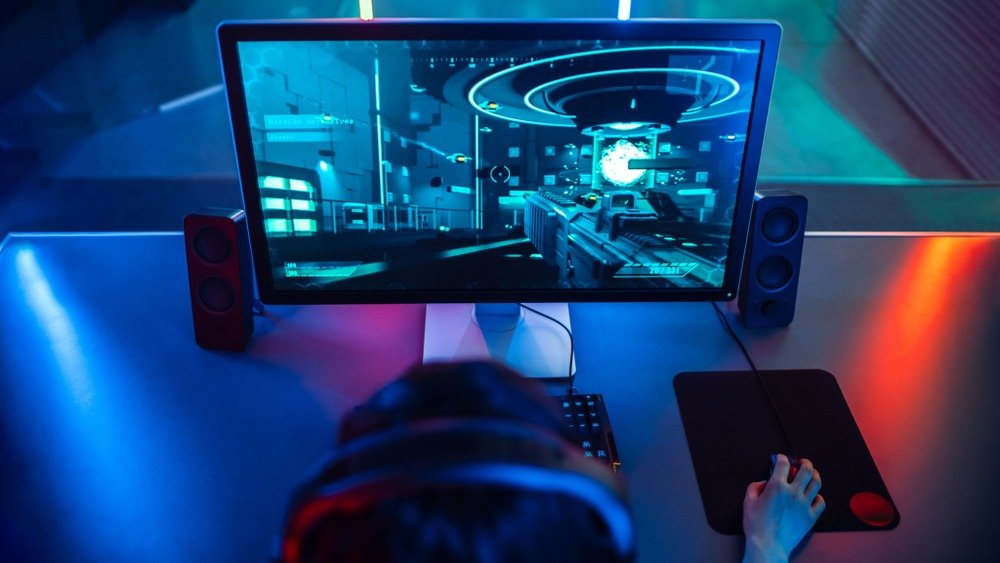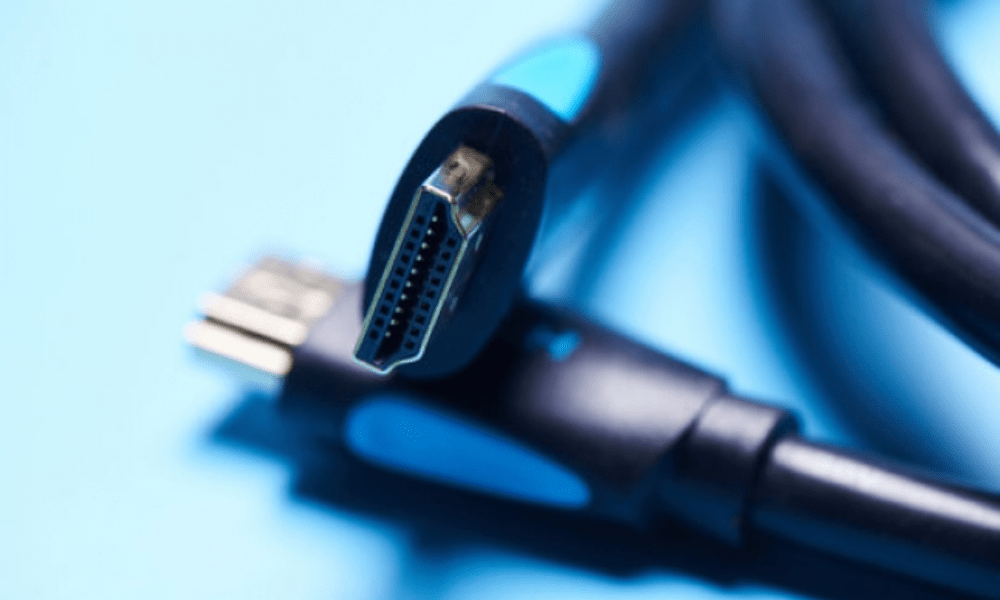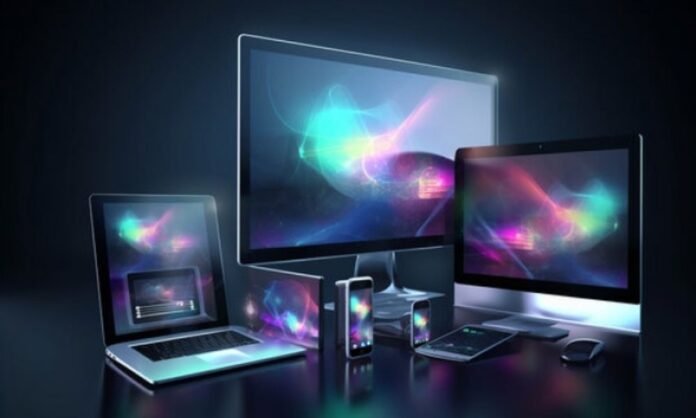Have you ever wondered what a huge desktop screen would look like? Imagine all the multitasking and immersive gaming possibilities you could have with a 50 or 60 inch screen instead of a standard 24 inch screen! However, you've probably noticed that the larger the screens, the more prohibitive they are price-wise.
But did you know that you can use your TV as a computer monitor? This may seem like a practical solution, but is it really the best option? In this article, we'll explore in detail using a TV as a computer monitor , the pros and cons, and the steps to set up your TV as a computer monitor.
Using a TV as a Monitor
You can use a TV as a computer monitor , but it may require some adjustments. Depending on your computer's outputs and your TV's inputs, you may need to use a special cable and check certain settings. However, most modern computers can be easily connected to most modern televisions.

Modern televisions are equipped with HDMI outputs. Some older TVs have DVI inputs, or even VGA inputs specifically designed for use with a computer. If your graphics card has an HDMI output, simply use an HDMI cable to connect your computer to your TV.
If you are using an old graphics card or motherboard that only has a DVI output, you can use a cheap DVI to HDMI cable to connect it to your TV's HDMI output. Amazon offers a six-foot AmazonBasics version for just 7 euros.
However, VGA inputs/outputs are not an ideal choice because they transmit an analog signal which provides a blurry and lower resolution image compared to HDMI or DVI cables.
If you want to use your TV as a second or third display, you may need to use another port, such as the DisplayPort output on your graphics card. In this case, you will need to use a different cable, such as a DisplayPort to HDMI . The main advantage of using DisplayPort output rather than DVI or VGA is that HDMI and DisplayPort transmit both the video and audio signal.
A DVI to HDMI cable can transmit both video and audio if your graphics card supports HDMI audio over DVI, which is unlikely if there are no HDMI ports. On the other hand, VGA only transmits the video signal. If you're using DVI or VGA , you'll probably need to separately connect your computer's audio to your TV or use external speakers or headphones .

In summary, try to use the HDMI or DisplayPort to HDMI connection if possible, as it is the simplest solution.
Preparing your computer
Before you connect your TV to your computer, you should check if your graphics card (or your computer's integrated graphics card) is capable of supporting your TV's resolution . To do this, you will first need to find your TV's resolution by consulting the manufacturer's manual.
Some TVs have non-standard resolutions, so your TV is not guaranteed to be supported. Most TVs use standard resolutions such as 720p , 1080p , or 4K . Next, you will need to find the maximum resolution supported by your graphics card or integrated graphics card by consulting the manufacturer's specifications or user manual.

Once you have verified resolution compatibility, you can proceed to physically connect your TV to your computer using the appropriate cable . Make sure both devices are turned off before connecting the cables to avoid potential damage.
Once the cables are connected, turn on your TV and computer. You may need to select the appropriate input source on your TV to display the image from your computer. Check your TV manual for instructions on how to make this selection.
Display Configuration
Now that your TV is connected to your computer, you'll need to configure the display to make sure everything works properly. In most cases, your computer will automatically detect the TV and adjust the display settings accordingly. However, there may be times when you need to make some manual adjustments.
Step 1 : Access the display settings for your computer by right -clicking the desktop and selecting " display settings " or " screen resolution ". You should see a list of detected screens, including your TV. Click on the TV to select it.
Step 2 : In the display settings, you can adjust the resolution, refresh rate, and other settings to match those recommended by your TV manufacturer. Be sure to select your TV's native resolution for the best possible picture quality.
Step 3 : Next, you can also configure the display arrangement if you are using multiple displays. You can choose to duplicate the display on both screens or extend the desktop to have more workspace. Experiment with different configurations to find the one that works best for you.
Advantages and disadvantages
There are some advantages and disadvantages to using a TV as a computer monitor. Here are some points to consider:
Benefits :
- Screen size : Televisions generally offer larger screen sizes than computer monitors, which can improve the viewing and working experience.
- Multitasking : With a larger screen, you can easily multitask, which can increase your productivity.
- Gaming and entertainment : Games and movies are more immersive on a big screen, which can enhance your entertainment experience.

Disadvantages:
- Resolution : Televisions generally have a lower resolution than computer monitors, which can result in less clear picture quality.
- Latency : Some TVs have higher latency than dedicated monitors, which can affect the responsiveness of games and apps.
- Ergonomics : TVs are not designed to be used at a normal working distance, which can lead to eye strain and posture problems.
See also: How to connect 2 screens to a laptop PC?
FAQs
Can I use any TV as a computer monitor?
Most modern TVs can be used as a computer monitor, but it's important to check the specifications of your TV to make sure it's compatible with your computer.
What is the recommended resolution for using a TV as a computer monitor?
The recommended resolution depends on the size of your TV. For 1080p TVs, the recommended resolution is 1920x1080. For 4K TVs, the recommended resolution is 3840x2160.
How can I reduce latency when using my TV as a computer monitor for gaming?
To reduce latency when using your TV as a computer monitor for gaming, here are some tips:
- Use game mode : Many modern TVs come with a game mode that reduces latency by turning off certain image processing and optimizing settings for gaming. Make sure to enable this mode in your TV settings.
- Use a high-quality HDMI cable : A high-quality HDMI cable can help reduce latency by ensuring fast and stable signal transmission. Opt for a cable certified as HDMI 2.0 or higher for best results.

- Turn off picture enhancement features : Some TVs have picture enhancement features such as motion smoothing or noise reduction. While these features can improve visual quality for movies and TV, they can introduce additional latency when gaming. Make sure to turn them off in your TV settings.
- Reduce the resolution : If you are experiencing high latency, you can try lowering the resolution of your TV. Lower resolution requires less processing and can reduce latency. However, this can also affect visual quality, so experiment to find the right balance.
- Use a DisplayPort to HDMI adapter : If your graphics card has a DisplayPort output, you can use a DisplayPort to HDMI adapter to connect your TV. DisplayPort outputs generally have lower latency than HDMI outputs, which can improve gaming performance.
Can I use my TV as a computer monitor for work?
Yes, you can definitely use your TV as a computer monitor for work. The larger screen size can allow you to view more content at once, which can be useful for productivity tasks like photo editing, graphic design, or programming . Just make sure to adjust the resolution and display settings to get the best experience.
What are the other benefits of using a TV as a computer monitor?
Besides screen size, multitasking, and immersive gaming, there are other potential benefits to using a TV as a computer monitor.
For example, some high-end TVs come with advanced features like High Dynamic Range (HDR) technology that delivers more vibrant colors and improved contrast. Additionally, some TVs have better quality built-in speakers than those in computer monitors , which can improve the overall audio experience.
Conclusion
Using your TV as a computer monitor can be a practical solution to enjoying a large screen without having to invest in an expensive monitor. However, this requires some adjustment and can have advantages and disadvantages. Be sure to check your TV and computer compatibility, choose the right cables, and configure display settings correctly to get the best experience possible.






